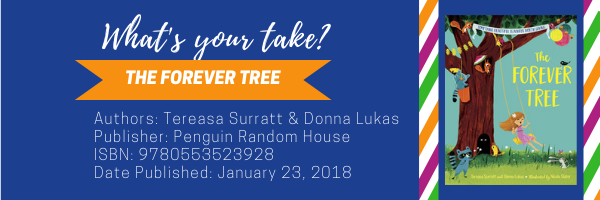María Acevedo-Aquino, Texas A&M University-San Antonio, San Antonio, TX and Dorea Kleker, The University of Arizona, Tucson, AZ
Recently we witnessed the largest global climate strike in history. With more than 2,500 events in over 163 countries on all seven continents, there have been estimates of up to 4 million participants worldwide. The massive numbers are inspiring. The fact that youth were at the center of planning and organizing these events gives hope in a time when things often feel hopeless. With the future of our planet at the forefront of discussions, debates and protests, María Acevedo and Dorea Kleker discuss five books this month for our youngest citizens that are smaller but no less important; and they examine ways that children can make both local and global connections to the earth and act in ways that support their families, communities and the planet.
MARIA: This is a true story about a tree that grew from something more than water and sunshine. It grew from love. The Tree was first celebrated and protected by the animals, then by Charlie, her grandfather, and many children and families who loved to spend time under its shade. But one spring, the Tree did not wake up with budding leaves. When the Tree was declared unsafe, the Animals and neighbors collaborated to save the Tree from being cut down. Together, they built a TreeHouse that brought it (the Tree) back to life.
This story reminded me about the interconnectedness and interdependence between humans and nature. Tree provides spaces for laughter, singing, and dancing. Tree is home and love. The animals and the humans love the Tree and that’s how the Tree grew strong and tall and proud. I read The Forever Tree as an invitation or perhaps an emergency call to protect the environment, to save our only true home.
DOREA: Our books this month may be short with simple text but the stories they contain provide many entry points for conversations about bigger concepts. While The Forever Tree shows a community coming together to protect their beloved tree, it also speaks to the time before the community was built, when the animals’ tree is first noticed and used by humans:
“At first, the Animals were worried, maybe even a little annoyed. This was their special
Tree, they weren’t quite sure they wanted to share it. The Raccoons began plotting a
revolution underground. The Squirrels argued for Animal and People togetherness. The Chipmunks were not of much help at all because they were still gazing at the clouds.”
As in any community and with any issue that arises within a community, there are different opinions and approaches to the action or lack of action taken. Each sees an issue through their own lens of experience. It takes time to build trust and to see the ways we are connected and dependent on one another. We are often only are shown the results of a community coming together. I find myself thinking that perhaps we need more examples of, and discussions around the messy process of coming together for a cause.
MARIA: I’m going to follow–up on that Dorea. At first, the animals could be perceived as selfish or even close–minded but ultimately I think they were protecting Tree by carefully observing the People and their actions: “But the People turned out to be good neighbors. They were kind to the animals and their beloved Tree.” The Animals were able to trust the People with the big responsibility of creating a reciprocal relationship with nature, only after the People showed their many ways of caring for Tree. If these Animals had relatives living on Silverstein’s The Giving Tree, then they had every right to be suspicious about People around nature. This makes me think of the complex process of listening to different perspectives, especially when those perspectives carry stories of actions that have caused damage. In other words, the Animals had to probably forgive the People for some of their ways of relating with nature in order to rebuild that trust needed for action; for saving Tree. So this messy process will require everyone to engage their minds and hearts.
Title: The Forever Tree
Author: Tereasa Surratt & Donna Lukas
Illustrator: Nicola Slater
ISBN: 9780553523928
Publisher: Penguin Random House
Date Published: January 23, 2018
Throughout October 2019, María and Dorea give their take on books focused on youth taking action. Check back each Wednesday to follow the conversation!
- Themes: Donna Lukas, Dorea Kleker, Forever Tree, Maria Acevedo-Aquino, Nicola Slater, Tereasa Surratt
- Descriptors: Books & Resources, My Take/Your Take

